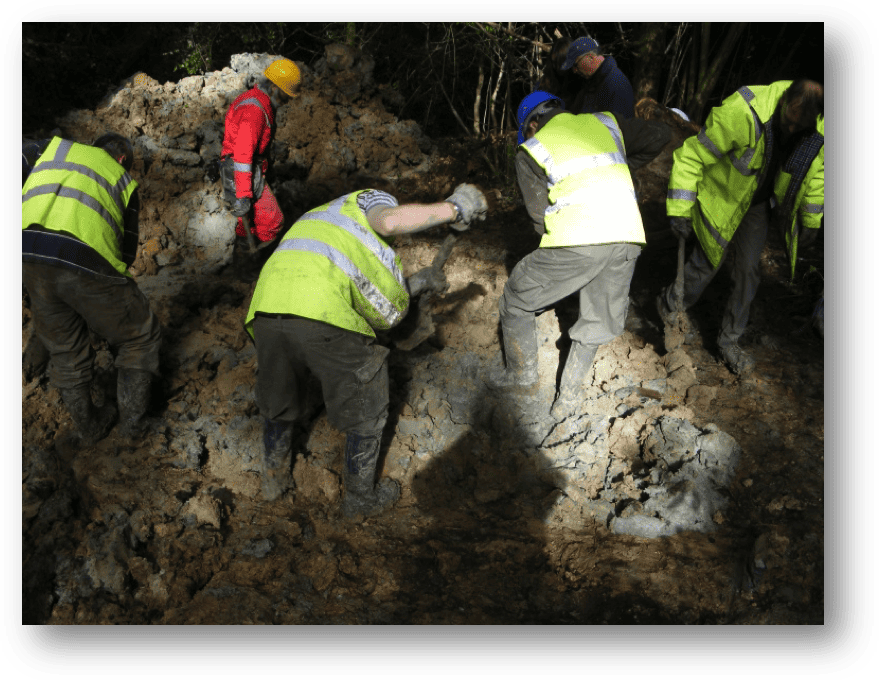
The crash site has been the subject of much interest. In 1972 the Battle of Britain Museum had a look at the site. But on discovering that this was a late Junkers Ju 88 they concluded that this was not a Battle of Britain plane and wound up their investigation.
In 1982 a dig by the Hawkinge Recovery Group recovered an engine. The site was dug again in 1992 by members of the Booker Museum. When the topsoil was removed the smell of aviation fuel was over- powering. Another engine was recovered, together with a burned parachute, navigational equipment, and Gunner Wende’s Iron Cross citation. Some of the recovered items can be seen in the framed case on the wall. Other items from that dig can be seen at the Wings Museum, Balcombe.
The National Trust dig on 13th October 2012 sought to remove all remaining material from the site. The items that went on display were just some of the huge amount of material that was recovered.

The National Trust team digging in the autumn of 2012 using a heavy digger. All items enveloped in the heavy clay soil of the area, which changes colour at the crash site from a yellowy brown to a dark grey muddy brown because of the presence of so much aviation fuel. This can clearly be seen in the top photo. Sam Bayley, Head Ranger at Leith Hill and Holmwood Common, can be seen picking out pieces of wreckage in the lower picture.
THE 2012 DIG

The National Trust’s Sam Bayley, Head Ranger at Leith Hill and Holmwood Common, and organiser of the dig, describes the event
“It was a long day and took many hours before any significant items were discovered, such as a padded bandage which would have come from the first aid kit and fragments of parachute. But after nearly 11 hours we hit the deepest part of the craft at just over 18 feet and discovered a propeller hub, which was so heavy that only the digger could lift it. The clay soil was heavily contaminated with aviation fuel and oil and had turned a dark grey colour and the extent of the main body of the crash site was easily evident as there was almost a line where the clay went back to being orange. As the light was fading the dig had been concluded and all the soil was put back and landscaped back into the area.”
Sam and his team worked to clean-up the huge number of ‘finds’ and to identify and assess them.
The National Trust wishes to record its appreciation of Simon Parry and his band of aviation diggers, and to thank Daniel and Kevin Hunt of the Wings Museum, Richard Case who donated himself and his digger for the day, and loyal National Trust volunteers Dave Rankin, Gary Robinson and Rose Cottrell who helped with cleaning of the finds.
Last : Personal Memories

